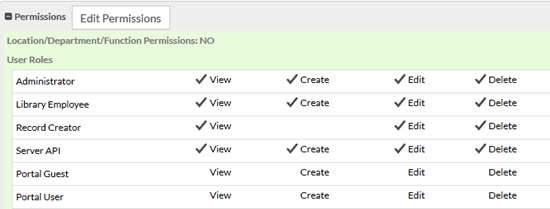Setting component-level permissions
You can set component-level permissions on an object, tab, menu, view, report, chart, or workflow action.
The setup pages to view and edit these components include a Permissions section where you can click Edit Permissions to set permissions for different roles.
You can also set these permissions on a role's Permissions page as described in Setting permissions by role. Setting permissions on a role's Permissions page allows you to see all views, reports, charts, and workflow actions associated with a particular object and all menus associated with a particular tab. This makes it easier to set a group of related permissions.
On an object definition, you can set View, Create, Edit and Delete permissions. Users in a particular role will have the specified permissions for object records of that type:

On a view or a chart, you can set a single View permission. A user's role (or the user) must have View permission on the associated object to be able to access the view or chart.

On a tab, menu, report, or workflow action component, you can set a single Access permission. A user's role (or the user) must have the appropriate permission(s) on the associated object(s) to be able to access a report or a workflow action.
